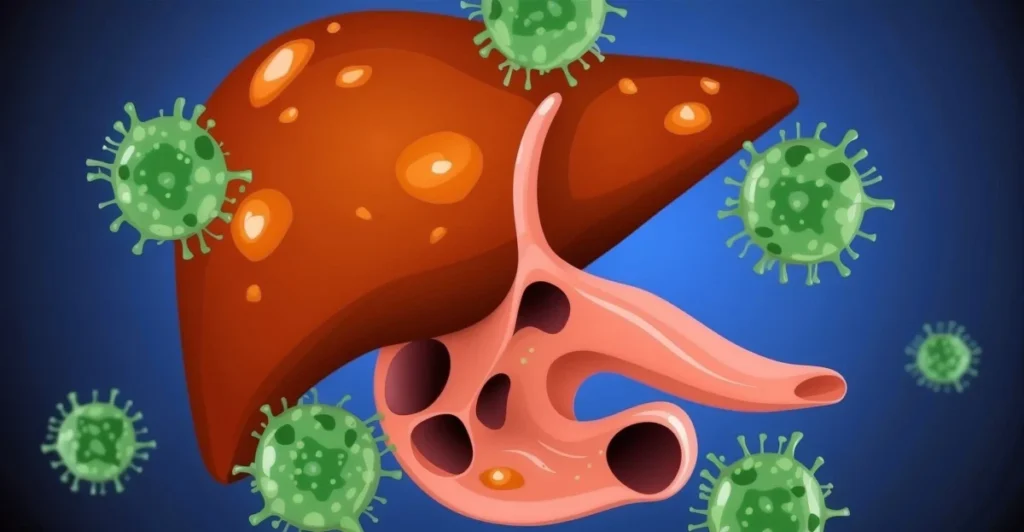Hepatitis is a prevalent yet often misunderstood condition affecting millions worldwide. This article aims to provide a comprehensive overview of hepatitis, including its types, causes, symptoms, prevention, treatment, and management.
Introduction to Hepatitis
What is Hepatitis?
Hepatitis refers to inflammation of the liver, a vital organ responsible for various metabolic functions, including detoxification and nutrient storage. This inflammation can result from viral infections, exposure to toxins, or autoimmune disorders.
Types of Hepatitis
There are several types of hepatitis, classified as A, B, C, D, and E, each caused by different viruses and exhibiting distinct characteristics.
Hepatitis A
Causes and Transmission
HAV is primarily spread through the consumption of contaminated food or water or close contact with an infected person. Poor sanitation and hygiene contribute to its transmission.
Symptoms
Symptoms of HAV may include fatigue, nausea, abdominal pain, jaundice, and fever. In some cases, the infection can be asymptomatic.
Prevention and Treatment
Preventive measures include vaccination, practicing good hygiene, and avoiding risky behaviors. Treatment focuses on supportive care, including rest and hydration, as HAV typically resolves on its own without specific medical intervention.
Hepatitis B
Causes and Transmission
HBV is transmitted through contact with infected blood, semen, or other bodily fluids. It can also be passed from an infected mother to her newborn during childbirth.
Symptoms
Symptoms of HBV may include fatigue, joint pain, dark urine, abdominal discomfort, and jaundice. Chronic infection can lead to serious liver complications.
Prevention and Treatment
Vaccination is the most effective way to prevent HBV. Antiviral medications and regular monitoring are essential for managing chronic cases.
Hepatitis C
Causes and Transmission
HCV is primarily spread through blood-to-blood contact, often due to sharing needles or unsanitary medical procedures.
Symptoms
Many people with HCV remain asymptomatic for years, leading to late-stage liver damage. Symptoms, when present, may include fatigue, nausea, abdominal pain, and jaundice.
Prevention and Treatment
Prevention involves avoiding risky behaviors and ensuring sterile medical practices. Treatment for HCV includes antiviral medications, which can cure the infection in many cases.
Hepatitis D
Causes and Transmission
HDV, also known as delta hepatitisvirus, occurs only in individuals infected with the HBV virus. It is transmitted through contact with infected blood or bodily fluids.
Symptoms
Symptoms of HDV are similar to those of HBV and may include jaundice, fatigue, abdominal pain, and nausea.
Prevention and Treatment
Prevention of HDV involves preventing HBV infection through vaccination and practicing safe behaviors.
Hepatitis E
Causes and Transmission
HEV is typically spread through contaminated water in areas with poor sanitation. It can also be transmitted through undercooked or raw meat from infected animals.
Symptoms
Symptoms of HEA are similar to those of other types of hepatitisvirus and may include jaundice, fatigue, abdominal pain, and nausea.
Prevention and Treatment
Preventive measures include ensuring access to clean water and practicing proper food hygiene. Treatment for HEA is supportive, focusing on managing symptoms until the infection resolves.
Complications of Hepatitis
Liver Damage
Chronic hepatitis can lead to progressive liver damage, increasing the risk of cirrhosis and liver cancer.
Liver Cancer
Chronic HBA and C infections significantly increase the risk of developing liver cancer, particularly in individuals with cirrhosis.
Diagnosis of Hepatitis
Liver Biopsy
A liver biopsy may be performed to evaluate the extent of liver damage and determine the appropriate course of treatment.
Management of Hepatitis
Lifestyle Changes
Adopting a healthy lifestyle, including abstaining from alcohol, maintaining a balanced diet, and avoiding hepatotoxic substances, can help manage hepatitisvirus and prevent complications.
Hepatitis Vaccination
Importance
Vaccination is crucial for preventing HAV and B infections and reducing the burden of liver disease worldwide.
Hepatitis and Pregnancy
Risks
Pregnant women with HBV or C may transmit the infection to their newborns during childbirth, increasing the risk of chronic hepatitisvirus and liver complications.
Management
Proper prenatal care, including screening for hepatitisvirus and appropriate medical interventions, can help reduce the risk of mother-to-child transmission.
Hepatitis Myths and Facts
Common Misconceptions
There are numerous myths surrounding hepatitisvirus, including misconceptions about its transmission, treatment, and prognosis.
Debunking Myths
Education and awareness initiatives play a vital role in dispelling myths and promoting accurate information about hepatitis.
Hepatitis Awareness and Advocacy
Campaigns and Initiatives
Global efforts to raise awareness about hepatitisvirus, such as World Hepatitis Day, aim to educate the public, reduce stigma, and improve access to prevention and treatment services.
Support Groups
Support groups provide valuable resources and emotional support to individuals living with hepatitisvirus and their families, helping them cope with the challenges of the condition.
Living with Hepatitis
Coping Strategies
Living with hepatitisvirus can be challenging, but adopting coping strategies such as seeking social support, managing stress, and maintaining a positive outlook can improve quality of life.
Support Systems
Family, friends, healthcare providers, and support groups form essential support systems for individuals affected by hepatitisvirus, offering practical assistance and emotional encouragement.
Conclusion
Hepatitis is a significant public health concern with diverse causes, symptoms, and implications. Understanding the different types of hepatitisvirus, practicing preventive measures, seeking timely medical care, and promoting awareness are essential steps in combating this silent threat to global health.

